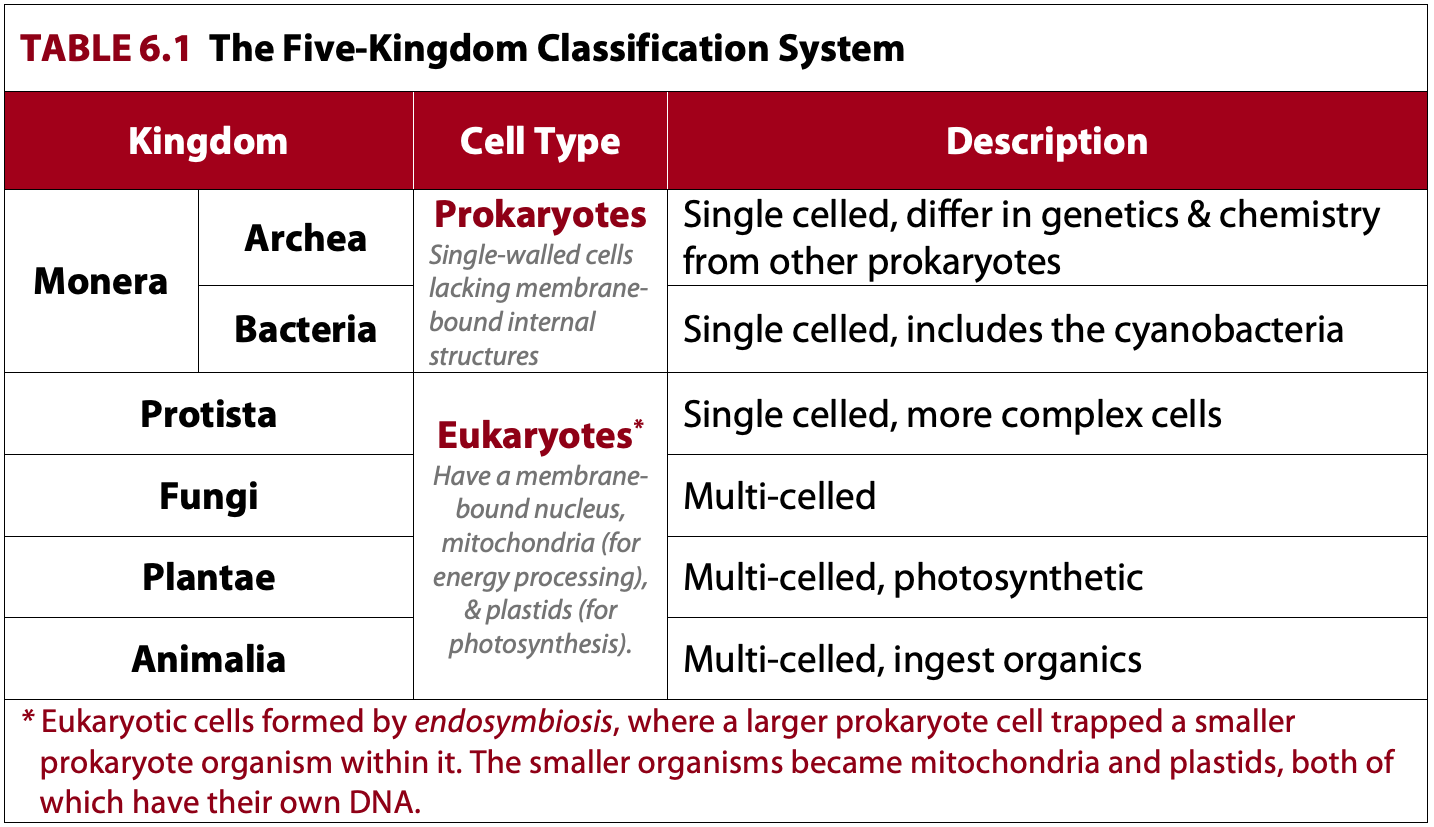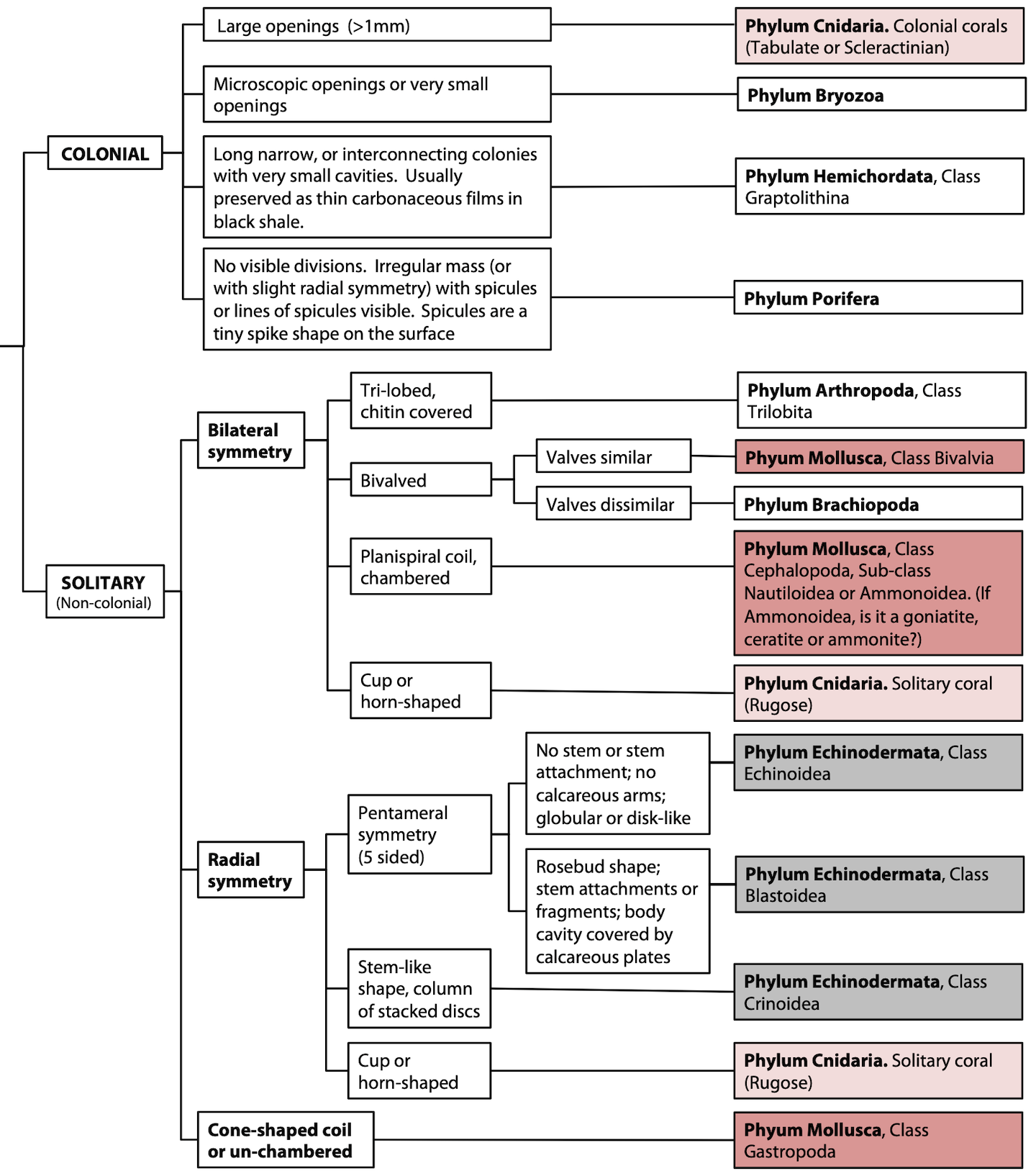Classification of Animals & Plants
Taxonomy is the study of how organisms are categorized based on shared characteristics. You have seen examples of phylogenetic trees and cladograms (branching diagrams based on cladistic analysis) in the lectures. These methods trace evolutionary differences or changes based on primitive (shared) and derived (new or different) characteristics. The different branches of a phylogenetic tree or a cladogram are given formal grouping names. The dominant system in use today was originally proposed by Carl Linnaeus (1707-1778) and is known as the Linnaean classification system. The system classifies organisms into groups from kingdom (largest) to species (smallest) as follows:
Kingdom, Phylum, Class, Order, Family, Genus, Species
Sometimes, further divisions are needed and a sub-category may be added such as a sub-class, or sub-order.
The following is an example of the Linnaean classification for a common vertebrate, pet dog (Canus familiaris):
Kingdom Animalia
Phylum Chordata
Class Mammalia
Order Carnivora
Family Canidae
Genus Canis
Species familiaris
Note: in the Linnean classification system, genus and species names are italicized. The genus name is written with a capital letter, but the species name is not.
Each classification level is based upon a set of shared characteristics that are common to all members of that level. Kingdoms are the broadest categories in the Linnaean system. For example, your pet dog is in Kingdom Animalia (multicellular and heterotrophic which means they eat other organic materials to survive, Table 6.1).
A dog has a spinal cord of nerves along its back and particularly a solid vertebral column (chordate) made of bone (Phylum Chordata). It is a mammal (Class Mammalia – warm blooded, 3 middle ear bones, hair, provide milk to their young via mammary glands) and dogs descended from meat eaters (Order Carnivora – not all members of this Order are carnivores but they are descended from them).
Having five toes on the front feet, four toes on the back feet and claws that do not retract (unlike cats) makes them part of Family Canidae. At the level of family, genus and species, it is often quite subtle things that separate one organism from another. We could all likely use some visible features and common sense to figure out a way to separate lions and wolves, but separating a coyote and wolf takes more care and knowledge and will come down to things like the size of different bones and specific shape attributes.
You just have to look at a group of people and it becomes apparent that within a species there can be considerable variation in outward body appearance, and so decisions must be made that separate between-species variations from within-species variations.
The final division—species—categorizes plants or animals of similar habit, morphology and function that may interbreed and produce fertile offspring. In the fossil record, it is impossible to tell if two particular individual organisms could interbreed and so the practical definition for paleontology is that of similar habit, morphology and function. The number of species that have come into existence and which no longer exists far outweighs the number of species currently living.

Want to Know More About Variations in Classification Systems?
Linneaus worked from the gross morphology of organisms at a time when there were limited tools to examine single celled organisms. He could separate plants and animals by whether they could make their own energy via photosynthesis, or needed to eat other organics for energy. However, he had little information on organisms the size of bacteria.
Today we have access to sophisticated tools to analyze organic compounds in small quantities. This kind of analysis have been able to tell us that a particular organism forms specific proteins and is therefore more likely closely related to other organisms that form the same proteins. Most recently, modern molecular genetics and the ability to directly examine DNA has allowed even closer examination of the smallest living members of our planet, and debates over classifications and ancestry are once again healthy and active. In fact, the 5th, 6th and 7th editions of the textbook discuss different classification systems based on these recent discoveries and debates. The 6th edition introduces three domains: the prokaryotic Archea (the simplest, earliest forms of what we would commonly term small b “bacteria”); the prokaryotic Bacteria (capital B indicating a formal classification name); and the Eukaryotes.
What does this mean for you? If you do a search on line for more information to help you study, you will find that there are several different methods of organizing life into kingdoms or even methods that include classification levels above kingdoms.
In this course, we will stick to the five-kingdom system as shown in Table 9.1 of the 8th edition of the textbook.
Using the Fossil Classification Flowchart
Most of the fossils that we will be examining in Labs 6 to 8 will be considered at the level of phylum, some to the level of order, and fewer still to the level of class. Over the next few labs we will gradually introduce more and more of the major phyla. Figure 6.2 is a thumbnail image of the decision tree chart that will help you to identify fossils and we will refer back to this chart as each group is introduced. You can view a larger version or download it as a PDF file by going back to Guide to Fossil Classification.

There are some critical junctions in the flow chart above that require specific fossil features to be identified. Most of these features were introduced in Lab 5, and others will be introduced with the fossils.
The flow chart decisions include:
- Colonial vs non-colonial life habit: identical individual organisms that live side by side (colonial) vs. solitary organisms.
- Symmetry: bilateral (side to side or left to right, top to bottom), radial (including pentameral), asymmetric.
- Shell coiling: planispiral (flat) or consipiral (cone shaped)
- Chambered shells: shells that have internal dividers that separate parts of the interior shell volume from each other
- Non-chambered shells: shells in which there is one open space.
Other descriptions in the flow chart that discriminate between branches are based upon the appearance of the fossil and these are best explained as we encounter each group.
